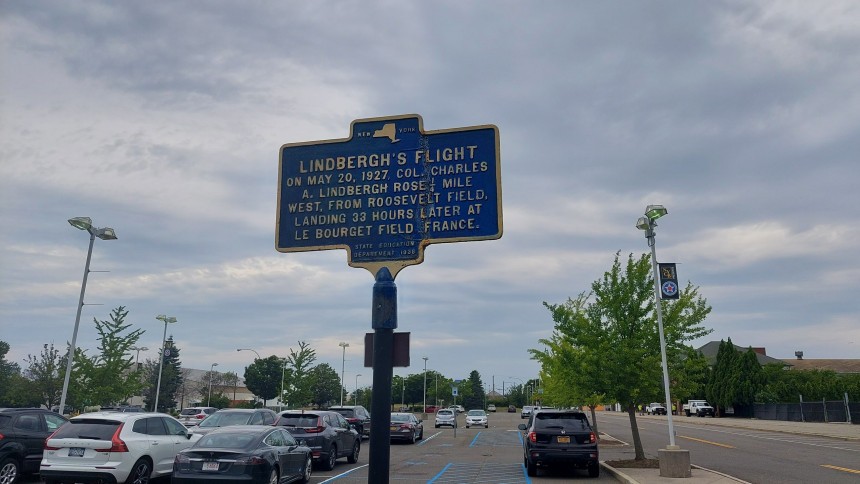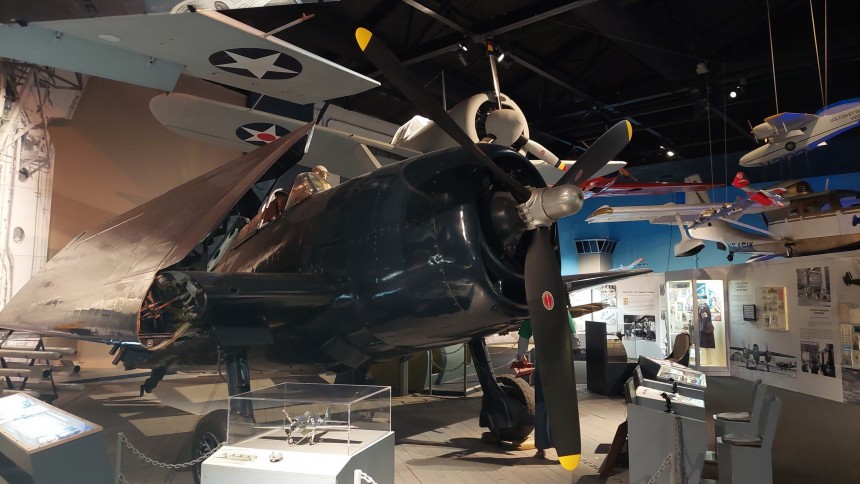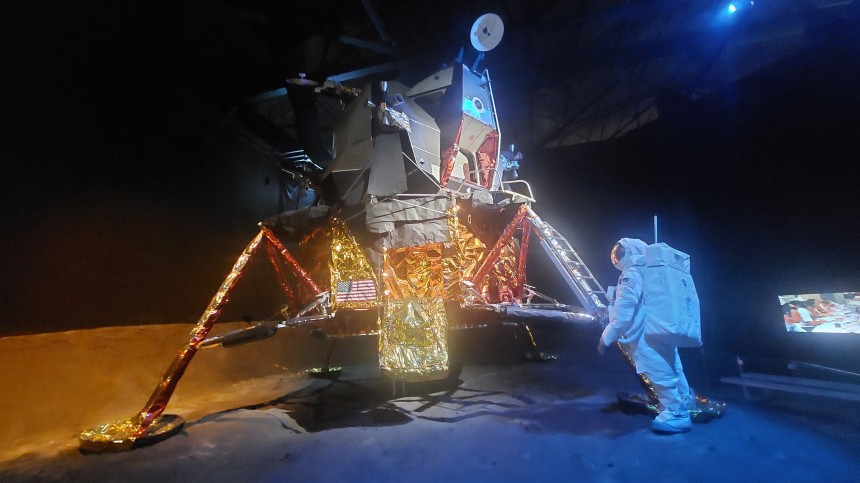In December 1903, a pair of Ohioan brothers took their primitive Flyer I prototype out for a series of four barely controlled powered flights near Kitty Hawk, North Carolina, the first of which only lasted 12 measly seconds, then called it a day. Thus, Kitty Hawk became known the world over as the spiritual birthplace of aviation.
But is this entirely true? Granted, it can't be argued that powered heavier than air flight began in that little North Carolina town. But if we're completely honest, that's only telling a small fraction of the story. When studied more closely, we find that if Kitty Hawk was aviation's birthplace, Long Island, New York, was its cradle.
This 118.1-mile long (190 km) stretch of glacial deposit bordering New York City lays claim to a set of achievements in aviation that's the envy of any global region. If France is God's Kitchen, Italy is their racetrack, and Detroit is their drag strip, then Long Island was God's airport. The long, flat stretch of grasslands nearly devoid of trees in central Long Island's Hempstead Plains made for a natural proving ground for airplanes. An irresistible calling sign for America's burgeoning aviators.
One can only assume that's why people have been flocking to Long Island to take to the skies well before the Wright Brothers were anything more than some bicycle makers from Ohio. As early as 1874, Long Islanders were everything from hot air balloons, steerable dirigibles, gliders, and even some early failed attempts at powered flight pre-Wright Brothers.
Two of the lead engineers working for aviation pioneer Samuel P. Langley, one of the Wright Brother's only contemporaries in their field in their day, were natives of nearby Freeport, New York. Though that team failed to beat the Wright Brothers before Langley's death, Long Island was destined to earn a reputation as the chosen base of operations for dozens of aviation contractors and the best place in the world to learn how to fly. It started with a native of New York State called Glenn H Curtiss, founder of one-half of the future Curtiss-Wright company.
In 1909, Curtiss flew an airplane of his own design called the Golden Flyer 25 miles from the town of Mineola over the Hempstead Plains. One of the very farthest distances flown in the day and the first successful heavier-than-air manned flight over Long Island. Just a year later, the largest aerial tournament ever assembled to that point was held over the historic Belmont Park horseracing venue. The sight of one-third of horse racing's triple crown.
From there, the multiple flight schools that took up shop in and around the Hempstead Plains trained America's first generations of pilots. A plot of land where today the Roosevelt Field Mall stands in Nassau County's Garden City became a popular takeoff and landing strip for these early pilot trainees and their instructors. By late 1917, the nearly 1000 acre (4.04 sq-km) facility was training America's very first combat pilots for a World War they were soon to enter.
By 1927, Roosevelt Field had earned immortality by serving as the launching point for Charles Lindbergh's historic flight from New York to Paris. The flight would launch Lindgburgh's career as an international celebrity. Amelia Earhart also used the airstrip during her flying career, using the airport as a starting point alongside co-pilot Wiley Post for their around-the-world flight in 1931.
Just a decade later, Long Island once again became a focal point of American aviation with its colossal wartime airplane production during World War II. From 1941 until 1945, a slew of different aerospace manufacturers contributed to an American war effort of herculean proportions, cranking out tens of thousands of fighters, bombers, and cargo planes on Long Island.
These historic airplane makers based on Long Island during and just before the Second World War include Curtiss, Republic, Grumman, Fairchild, and Brewster, among others. The engineers and workers at these aerospace companies contributed tens of thousands of combined airframes toward a victorious war effort.
Icons like the Grumman F4F Wildcat, TBF Avenger, Hellcat F6F Hellcat, and the Republic P-47 Thunderbolt became mainstays with the U.S. Navy, Army Air Forces, and the Marine Corps throughout the conflict. Even into the late 1960s, both Grumman and Republic continued to provide militaries around the world with quality military airplanes like the Republic F-105 Thunderchief, Grumman F-14 Tomcat, and the E2C Hawkeye AWACS until Fairchild purchased Republic in the late 1960s.
Northrop aviation of California forcefully took over Grumman to form Northrop Grumman in 1994, ending the saga of American aviation on Long Island. Before this sad end, Long Island was a cornerstone of the American space program as well. In possibly its finest achievement, the Grumman Lunar Excursion Module was the vehicle that Neil Armstrong used to make his one small step for man and one giant leap for mankind.
Today, there's little left in either of Long Island's two counties to remind residents of the aerospace powerhouse their hometowns used to be. That is, except for one, the Cradle of Aviation Museum in Garden City, on the site of Roosevelt Field and the former Mitchel Air Force Base. Here, the entire two-hangar large museum is packed to the brim with airplanes and memorabilia from Long Island's past as the true heart of American aviation.
You can learn all about our trip to the Cradle of Aviation right here on autoevolution.
This 118.1-mile long (190 km) stretch of glacial deposit bordering New York City lays claim to a set of achievements in aviation that's the envy of any global region. If France is God's Kitchen, Italy is their racetrack, and Detroit is their drag strip, then Long Island was God's airport. The long, flat stretch of grasslands nearly devoid of trees in central Long Island's Hempstead Plains made for a natural proving ground for airplanes. An irresistible calling sign for America's burgeoning aviators.
One can only assume that's why people have been flocking to Long Island to take to the skies well before the Wright Brothers were anything more than some bicycle makers from Ohio. As early as 1874, Long Islanders were everything from hot air balloons, steerable dirigibles, gliders, and even some early failed attempts at powered flight pre-Wright Brothers.
Two of the lead engineers working for aviation pioneer Samuel P. Langley, one of the Wright Brother's only contemporaries in their field in their day, were natives of nearby Freeport, New York. Though that team failed to beat the Wright Brothers before Langley's death, Long Island was destined to earn a reputation as the chosen base of operations for dozens of aviation contractors and the best place in the world to learn how to fly. It started with a native of New York State called Glenn H Curtiss, founder of one-half of the future Curtiss-Wright company.
From there, the multiple flight schools that took up shop in and around the Hempstead Plains trained America's first generations of pilots. A plot of land where today the Roosevelt Field Mall stands in Nassau County's Garden City became a popular takeoff and landing strip for these early pilot trainees and their instructors. By late 1917, the nearly 1000 acre (4.04 sq-km) facility was training America's very first combat pilots for a World War they were soon to enter.
By 1927, Roosevelt Field had earned immortality by serving as the launching point for Charles Lindbergh's historic flight from New York to Paris. The flight would launch Lindgburgh's career as an international celebrity. Amelia Earhart also used the airstrip during her flying career, using the airport as a starting point alongside co-pilot Wiley Post for their around-the-world flight in 1931.
Just a decade later, Long Island once again became a focal point of American aviation with its colossal wartime airplane production during World War II. From 1941 until 1945, a slew of different aerospace manufacturers contributed to an American war effort of herculean proportions, cranking out tens of thousands of fighters, bombers, and cargo planes on Long Island.
Icons like the Grumman F4F Wildcat, TBF Avenger, Hellcat F6F Hellcat, and the Republic P-47 Thunderbolt became mainstays with the U.S. Navy, Army Air Forces, and the Marine Corps throughout the conflict. Even into the late 1960s, both Grumman and Republic continued to provide militaries around the world with quality military airplanes like the Republic F-105 Thunderchief, Grumman F-14 Tomcat, and the E2C Hawkeye AWACS until Fairchild purchased Republic in the late 1960s.
Northrop aviation of California forcefully took over Grumman to form Northrop Grumman in 1994, ending the saga of American aviation on Long Island. Before this sad end, Long Island was a cornerstone of the American space program as well. In possibly its finest achievement, the Grumman Lunar Excursion Module was the vehicle that Neil Armstrong used to make his one small step for man and one giant leap for mankind.
Today, there's little left in either of Long Island's two counties to remind residents of the aerospace powerhouse their hometowns used to be. That is, except for one, the Cradle of Aviation Museum in Garden City, on the site of Roosevelt Field and the former Mitchel Air Force Base. Here, the entire two-hangar large museum is packed to the brim with airplanes and memorabilia from Long Island's past as the true heart of American aviation.






















